IoT realtime monitoring system
An IoT application project born from the passion of a single employee
An enormous number of production machines are in operation at our factories.
The only way to tell if they are operating properly or not is to look at the operation lamp on each machine.
Is there a way we could improve this analog situation using IoT?
One, then two, then three employees came forward.
Project member
-

Manager
Naoki Shibata
Joined in 2008
Project manager. In charge of software related issues, including cloud , data visibility, etc.
-

Senior supervisor
Yuki Yoshinaga
Joined in 2016
Project originator. In charge of hardware related issues, including sensors, etc.
-

Programmer
Somruthai Akkachan
Joined in 2016
Participating in the second step, which is linking the system using mobile device.
Objectives
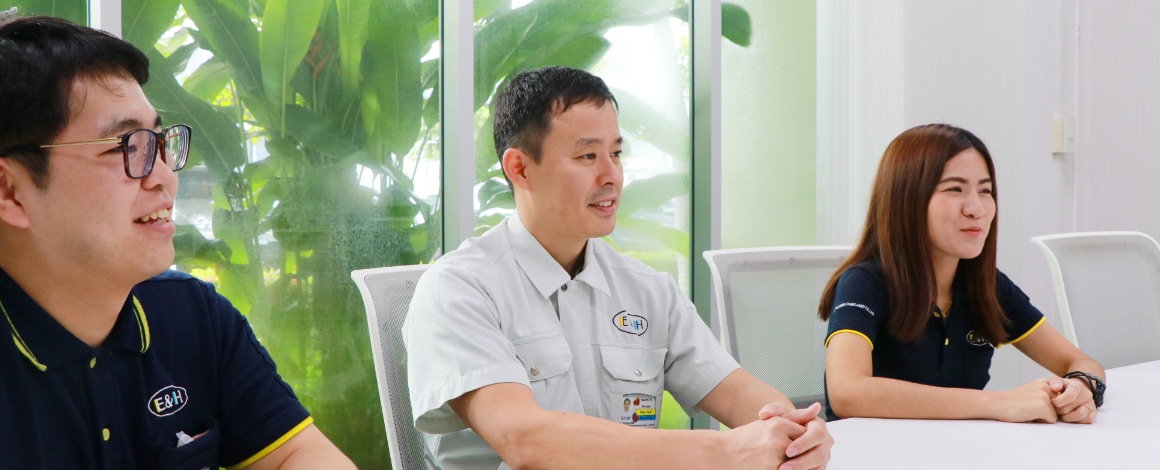
We possess approximately 800 production machines, and previously, the only way to check the operational status of these machines was for someone on-site to directly look at the machine’s operational status. So, it took a long time for on-site managers to receive a report of an abnormality after a machine had stopped. Therefore, the purpose of this project is to enable quicker administrative decision-making by managing the operational status of an enormous number of machines at a glance through the construction of a system capable of ascertaining status in real time using currently popular IoT.
The initiative of a single employee led to a company project.
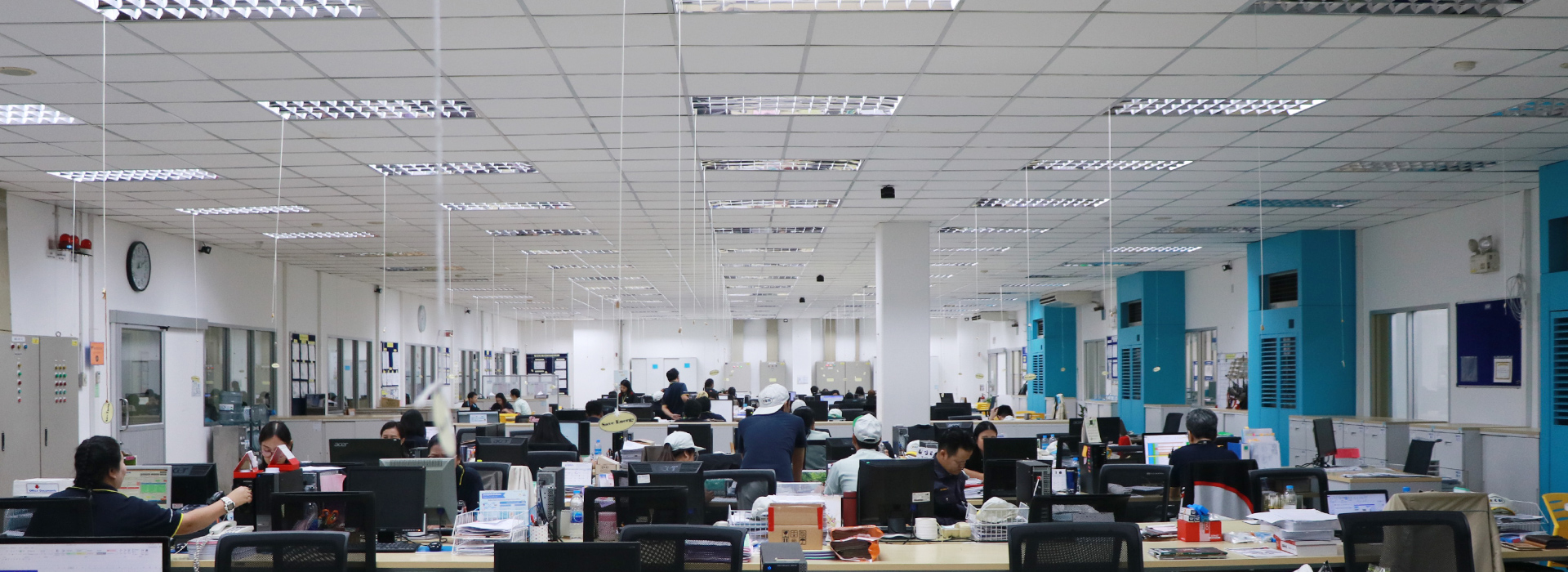

I was originally in the Production Department, and the project started when I began testing how to acquire information on machine operational status using sensors.
I could proceed the project by myself all the way to the point of determining the operational status of machines using sensors and uploading this data to the Internet, but I didn’t know how to make this data available for viewing, so I went to Mr. Shibata in the IT Department for advice.
At that point, Mr. Shibata became very interested in what I was saying, and he took on the task of making the data available for viewing.
Later, he created an opportunity for me to explain within the company what we were doing because he felt “it was something that the entire company should be engaged in.” From that point, it became an officially recognized company project. I switched departments and now I work together with Mr. Shibata.
Sensor selection – a process of trial and error
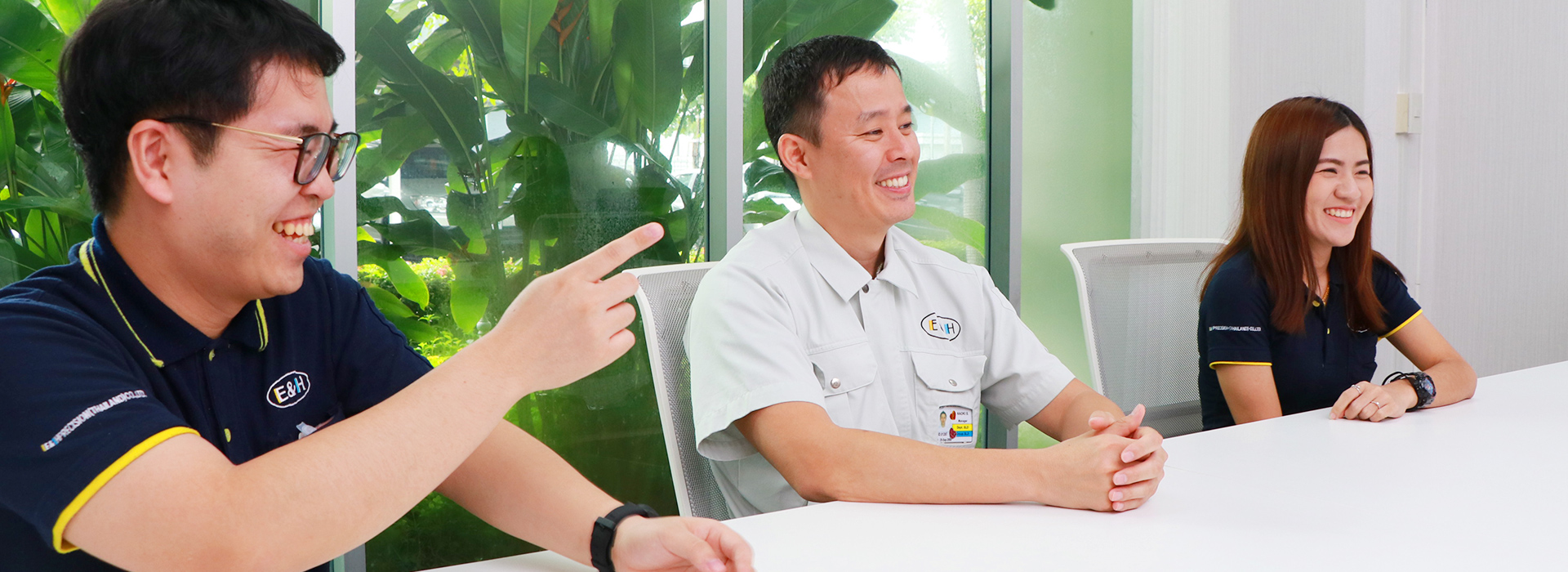
The first thing we did was selecting a “sensor” to determine operational status of the machines. We tried out more than twenty different types, and conducted experiments using the ones we had selected from among those.
The first experiment was with contact sensors. It was a simple design that would keep count and send information each time the sensor made contact with the target object.
However, when using contact sensors, they move slightly with each instance of contact, which creates errors. There were also major concerns about their lifespan.
Next, we tried non-contact sensors that use infrared light. However, in the oily environment of the factory, infrared light produced mistaken measurements due to refraction altering the light, so we determined that it would be difficult to use infrared light.
We narrowed down our search for the “method with the least measurement errors” to non-contact type sensors, and in our investigation, we hit upon the idea of “electric current sensors.” These too displayed slight errors, but we were able to achieve stable output through appropriate circuit design and programming. It took us nearly half a year to get to this point.
The search for how to make the data available for viewing began from scratch.
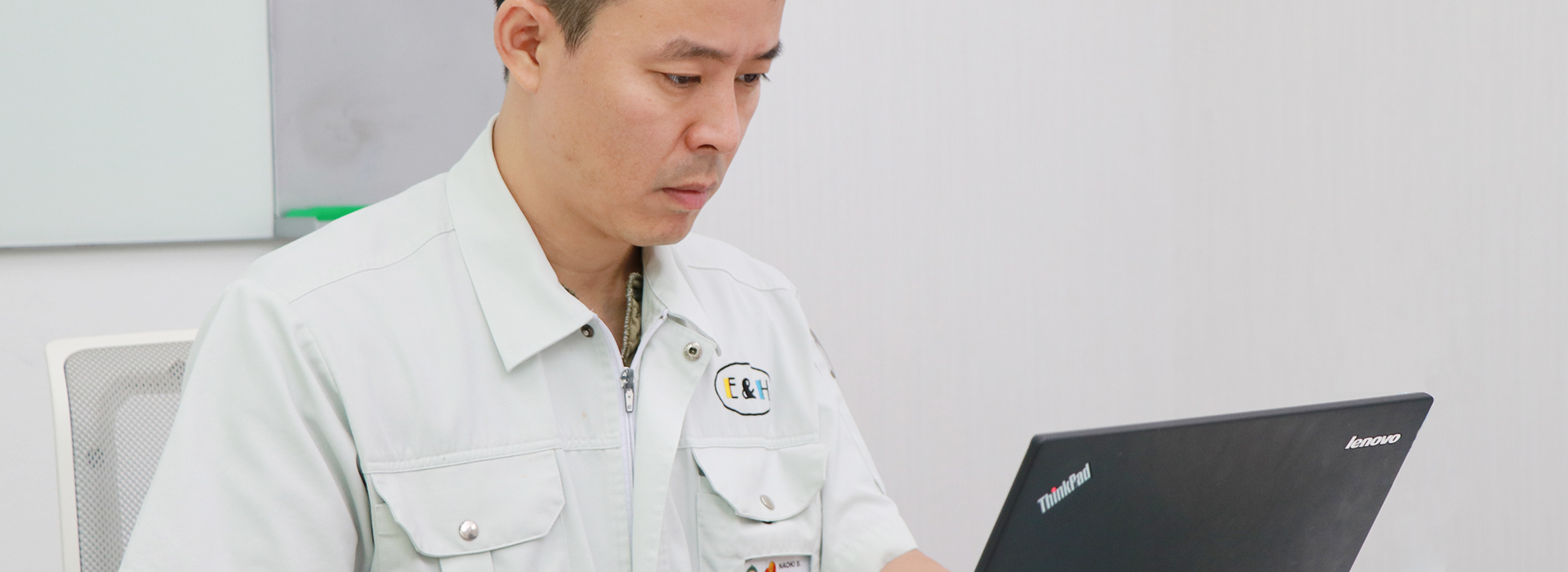

The next task was making the data obtained by the sensors available for viewing. At first, we had absolutely no idea about where to send the data or how to make it viewable.
We knew a little bit about so-called “IoT,” which is quite popular in the world now, but we didn’t know what type of application to use or where to start, so with no hints whatsoever, we started reading books and searching on the Internet.
We learned about an application called Azure from Microsoft and we decided to use it, but at the time, we couldn’t understand 80% of the contents of the Azure overview webpage. So, we purchased some more books, looked on the Internet and started by actually trying to use it ourselves.
We learned more about it as we went, and it gradually began to take shape. At a certain point, we contacted Microsoft because there was an aspect we couldn’t understand. We were told that this is fundamentally the kind of project that IT technicians would handle and that this was the first time they had ever seen amateurs in the manufacturing industry trying something like this. They also showed great interest in us. After that, they began cooperating with us and visiting us once a month.
Nearing completion of step 1 and expanding into a project that the whole company had high hopes for
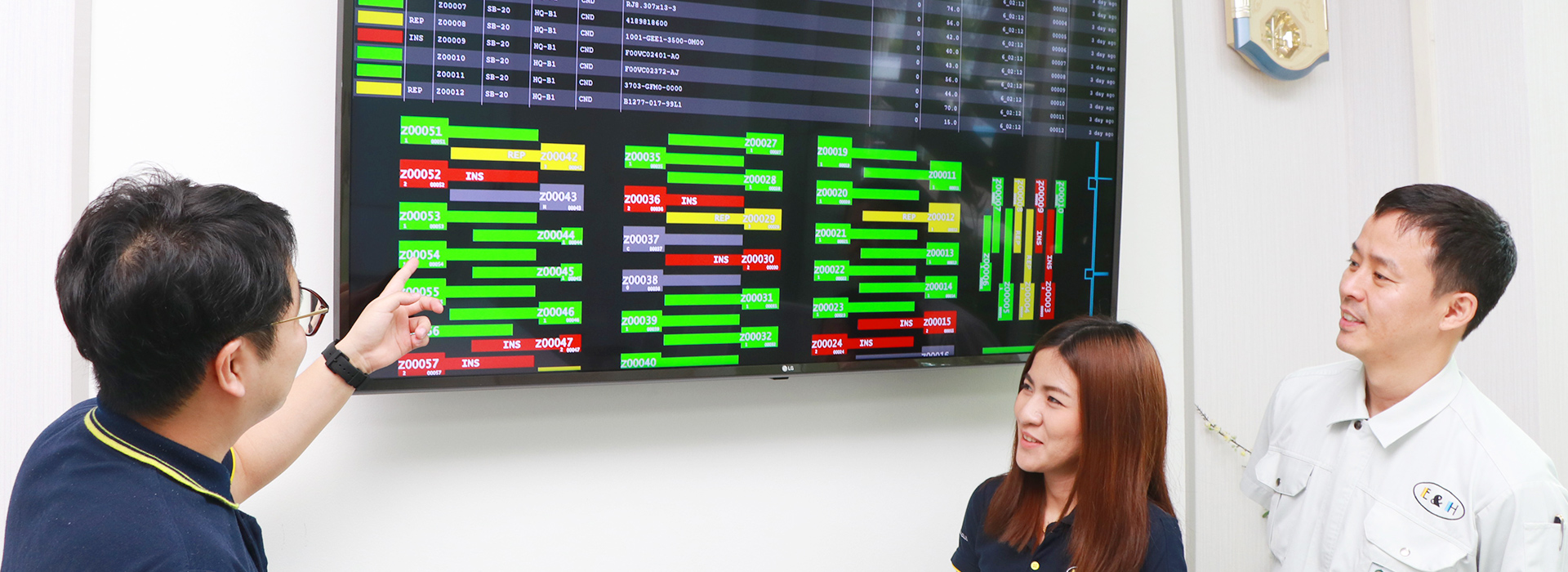
At the current stage, as step 1 in the project, we have nearly succeeded in sending green, yellow and red signals using small computers attached to each machine and conducting centralized control of these via the Internet.
We have not reached the point of issuing a completion report yet, but hopes are high within the company, and we are pleased to often hear comments from employees like, “Hurry up with that” and “When are you going to be finished?”
We are also receiving requests within the company for functions that we had not initially anticipated like, “I want to be able to input the cause of machine stoppage from the portable terminal.”
We have also been hearing talk of using the technology to manage other tasks as well. For example, for task recording, we currently uses a sheet of paper as a check sheet where employees keep track by writing what they did and when, but it would be better to manage this by sending it as electronic data.
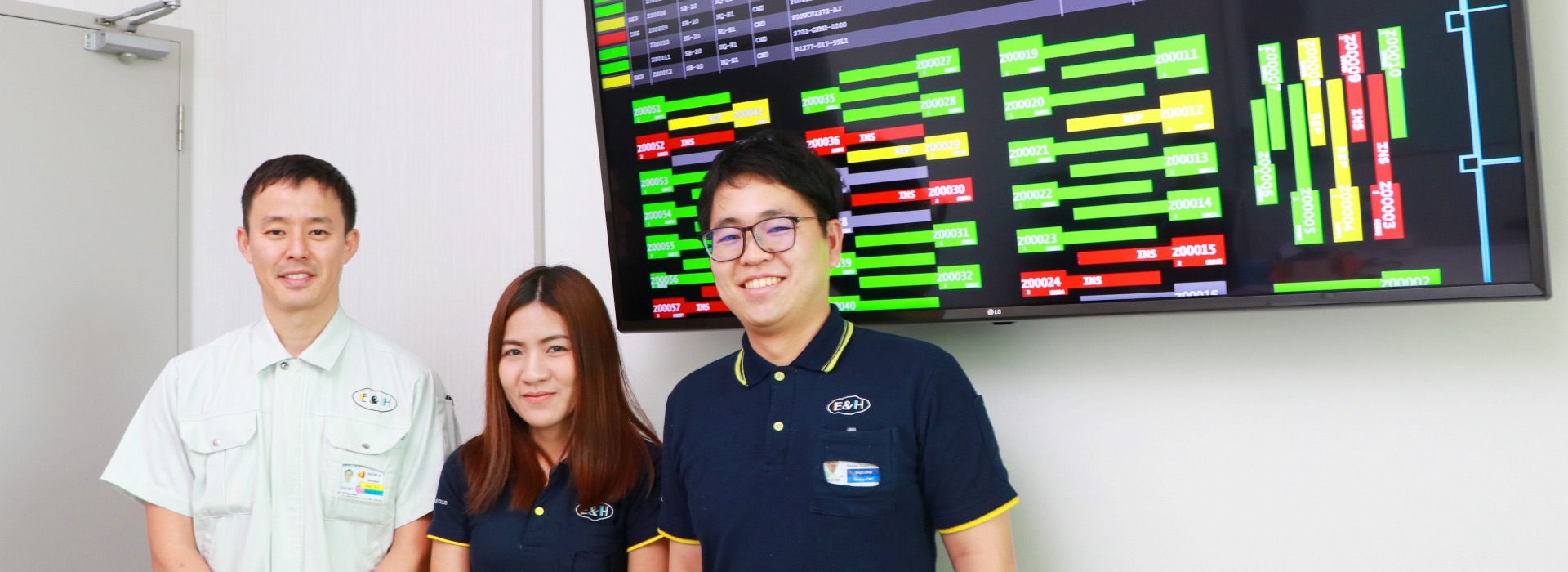
Initiation of step 2 and onward to further challenges
In step 2 of the project, we will begin to go paperless by inputting data from the portable terminals, and little by little, we are incorporating machine learning and proceeding with data analysis. In the future, we hope that AI will be able to determine the causes of errors through automation of data collection and analysis.
In addition, we have made new discoveries that we never would have been able to before because this system enables us to ascertain operational status accurately. As there remains a large store of unused, sleeping data within the company, we want to consolidate all of those data so that it can be used as effective guidelines in administrative decision-making.
We want to contribute to the development of the company by creating the best system in the world, which would befit us as a lathe machining company aiming to become the best in the world. There are many issues to resolve, but we intend to fully enjoy the process.

